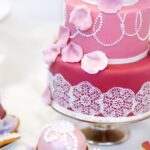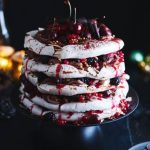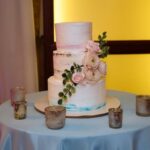Are you looking to elevate your cake decorating skills? Learn how to decorate cakes using royal icing, a versatile and classic technique that can take your creations to the next level. Royal icing is a popular choice among bakers for its ability to create intricate designs and precise detailing on cakes, making it a staple in the world of pastry arts.
Royal icing is a smooth, hard-drying icing made from powdered sugar, egg whites, and sometimes flavorings like lemon juice or cream of tartar. Its unique consistency allows for beautifully piped decorations and intricate patterns on cakes. Whether you’re a beginner looking to improve your decorating skills or an experienced baker wanting to explore new techniques, royal icing offers endless possibilities for creating stunning edible art.
In this comprehensive guide, we will cover everything you need to know about working with royal icing. From essential tools required for successful cake decorating to advanced techniques like stenciling and lace piping, we’ll walk you through the steps of preparing royal icing with the right consistency. Get ready to unleash your creativity as we dive into the world of royal icing and learn how to transform simple cakes into works of art.
Tools Needed for Decorating With Royal Icing
Piping Bags and Tips
One of the most essential tools for decorating cakes with royal icing is a set of piping bags and tips. Piping bags allow you to control the flow of icing and create intricate designs on your cake. Additionally, different tip sizes can help you achieve various textures and patterns, from delicate lines to bold rosettes.
Offset Spatula
An offset spatula is another must-have tool for working with royal icing. This tool helps you spread icing smoothly on the surface of the cake, creating a flawless base for your decorations. The angled shape of an offset spatula allows for easy maneuvering around the edges and corners of the cake.
Decorating Brushes
Decorating brushes are useful for adding fine details to your cake decorations using royal icing. They can be used to paint intricate designs, apply edible glitter or luster dust, and even create watercolor effects on your cake. Having a variety of brush sizes in your toolkit will give you more flexibility in your creative process.
Couplers and Flower Nails
Couplers are handy tools that allow you to easily switch out different piping tips on the same bag, saving time during decoration. Flower nails are particularly useful for creating delicate royal icing flowers or other 3D decorations that require a more intricate approach. These tools can elevate your cake decorating skills and help you achieve professional-looking results.
Preparing Royal Icing
Royal icing is a versatile and popular choice for cake decorators due to its smooth finish and ability to hold intricate designs. Before you can start decorating your cakes with royal icing, it’s essential to know how to prepare the icing properly. The key to successful royal icing decorations lies in achieving the right consistency, which will allow you to pipe, flood, and create detailed designs with ease.
Ingredients Needed
To prepare royal icing, you will need only a few simple ingredients: confectioners’ sugar (powdered sugar), meringue powder or egg whites, and water. Meringue powder is a popular choice as it provides stability to the icing without the risk of salmonella that comes with using raw egg whites. However, if you prefer using fresh egg whites, make sure they are pasteurized.
Step-by-Step Guide
- Start by sifting the confectioners’ sugar to remove any lumps that could cause clumping in your royal icing.
- In a clean and grease-free bowl, combine the sifted confectioners’ sugar with meringue powder or egg whites according to the recipe instructions.
- Add water gradually while mixing on low speed until the mixture reaches your desired consistency. The consistency of your royal icing will vary depending on the technique you intend to use – thicker for outlining and piping, thinner for flooding.
- Once you have achieved the desired consistency, beat the royal icing on high speed for a few minutes until stiff peaks form. Be careful not to overbeat the icing as it can introduce air bubbles that may affect your decorations.
By following this step-by-step guide on preparing royal icing with the right consistency, you’ll be well on your way to creating stunning cake decorations using this versatile medium. Experimenting with different consistencies and techniques will allow you to unleash your creativity and take your cake decorating skills to new heights.
Basic Techniques for Decorating Cakes
Royal icing is a versatile and popular choice for cake decorating due to its smooth finish and ability to hold intricate designs. Mastering basic techniques is essential for creating beautiful cakes using royal icing. Here are some fundamental techniques every aspiring cake decorator should know:
- Outlining: Use a piping bag fitted with a small round tip to outline the design on the cake. This creates a barrier for the flooded icing and adds definition to the design.
- Flooding: Once the outline has set, use a thinner consistency of royal icing to fill in the design. Gently squeeze the piping bag to release the icing, allowing it to flow smoothly within the outlines.
- Piping: Piping involves using different piping tips to create various designs on the cake. Practice with different tips to create lines, dots, swirls, and other decorative elements.
With these basic techniques mastered, decorators can move on to more advanced methods such as stenciling, lace piping, and brush embroidery.
Stenciling
Piping royal icing over stencils can add intricate patterns and designs to your cakes. Simply secure the stencil onto the cake surface and carefully spread or pipe royal icing over it. Once set, gently lift off the stencil to reveal a beautifully detailed design.
Lace Piping
Lace piping involves creating delicate lace-like patterns on cakes using fine piping tips. This technique adds a level of elegance and sophistication to your cake designs. Practice steady hand movements and varying pressure when piping for best results.
Brush Embroidery
Brush embroidery is a technique where royal icing is piped onto the cake in a raised pattern, then gently brushed with a damp brush to create a soft, textured look. This technique can add dimension and interest to any cake design. Experiment with different brush sizes and pressure levels for unique effects.
By mastering these advanced techniques along with the basics of outlining, flooding, and piping with royal icing, decorators can elevate their cake decorating skills to new heights while creating stunning creations that will impress any audience.
Advanced Techniques to Take Your Cake Decorating to the Next Level
Royal icing is a versatile and popular choice for decorating cakes due to its smooth finish, ability to hold intricate designs, and long-lasting durability. To take your cake decorating skills to the next level, advanced techniques like stenciling, lace piping, and brush embroidery can elevate the look of your creations.
Stenciling involves using food-safe stencils to create detailed patterns or designs on the surface of a cake. By carefully applying royal icing over the stencil with a palette knife or spatula, you can achieve beautiful and intricate decorations with ease. Stencils come in various shapes and sizes, allowing for endless design possibilities on your cakes.
Lace piping involves piping delicate lace-like patterns onto cakes using royal icing. This technique requires a steady hand and precision to create intricate lace designs that add an elegant touch to any cake. By practicing different piping techniques and experimenting with various tips, you can master the art of lace piping and use it to enhance the visual appeal of your creations.
| Advanced Cake Decorating Techniques | Description |
|---|---|
| Stenciling | Create detailed patterns or designs using food-safe stencils |
| Lace Piping | Pipe delicate lace-like patterns onto cakes for an elegant touch |
Troubleshooting Common Royal Icing Issues
Royal icing is a versatile and popular medium for decorating cakes, cookies, and other baked goods. Its smooth finish and ability to hold intricate designs make it a favorite amongst bakers and decorators alike. However, working with royal icing can sometimes present challenges that need to be addressed. In this section, we will discuss common problems that may arise when using royal icing for cake decoration and provide solutions on how to troubleshoot them effectively.
One of the most common issues when working with royal icing is achieving the right consistency. If the icing is too thick, it can be difficult to pipe or spread smoothly on the cake surface. On the other hand, if the icing is too thin, it may not hold its shape when decorating.
To ensure the perfect consistency, start by following a reliable royal icing recipe and adjust the amount of water or powdered sugar as needed. Gradually add small amounts of either ingredient until you reach the desired consistency for outlining or flooding your designs.
Another common problem that decorators face is clogged tips while piping with royal icing. This can happen due to hardened bits of icing or debris getting stuck in the tip opening. To prevent this issue, always keep your piping tips clean by washing them thoroughly after each use and using a tip brush to remove any dried-up icing particles.
Additionally, consider using a coupler system that allows you to easily change tips without having to empty and refill piping bags repeatedly. By maintaining clean tools and being proactive in preventing clogs, you can avoid interruptions in your decorating process.
Lastly, color bleeding is a frustrating problem that occurs when different colors of royal icing bleed into each other, creating an unintended marbled effect on your cake decorations. To prevent color bleeding, make sure to allow each color layer to dry completely before adding another one on top. This will help create crisp borders between different sections of your design and minimize any bleeding effects.
Additionally, consider using gel food colors instead of liquid ones as they are more concentrated and less likely to bleed into adjacent areas of wet icing. By being mindful of these factors and taking preventive measures like adequate drying time between layers, you can achieve clean and professional-looking decorations with royal icing.
| Royal Icing Issue | Troubleshooting Solution |
|---|---|
| Icing Consistency | Adjust water or powdered sugar gradually until desired consistency is reached |
| Clogged Tips | Keep piping tips clean after each use; consider using coupler system for easy tip changes |
| Color Bleeding | Allow each color layer to dry completely before adding another; use gel food colors for less bleed potential |
Tips and Tricks for Perfect Cake Decorations
Decorating cakes with royal icing can be a fun and creative process, but it also requires some insider tips and tricks to achieve perfect cake decorations. Whether you are a beginner or have some experience with royal icing, these tips will help elevate your cake decorating skills to the next level. Here are some valuable insights on how to decorate cakes using royal icing:
- Use gel food colors: When coloring your royal icing, opt for gel food colors instead of liquid ones. Gel colors are more concentrated, so you only need a small amount to achieve vibrant hues without altering the consistency of the icing.
- Practice consistent pressure: Consistency is key when it comes to piping with royal icing. Practice applying consistent pressure when piping decorations on your cake to ensure uniformity in the design.
- Invest in quality tools: Quality tools can make a significant difference in your cake decorating results. Invest in good quality piping tips, couplers, and bags to make the process smoother and more efficient.
Achieving smooth finishes with royal icing is essential for creating professional-looking cake decorations. To achieve this, follow these additional tips:
- Let each layer dry before adding another: When working on intricate designs that require multiple layers of royal icing, allow each layer to dry completely before adding the next one. This will prevent smudging or blending of colors.
- Use a turntable: A turntable can make decorating cakes with royal icing much easier. It allows you to rotate the cake smoothly while piping or spreading the icing, ensuring even coverage and smooth finishes.
By incorporating these tips and tricks into your cake decorating routine, you’ll be able to create intricate designs, achieve smooth finishes, and work efficiently with royal icing. Remember that practice makes perfect, so don’t be discouraged if your first attempts aren’t flawless. With time and experience, you’ll develop your own style and master the art of decorating cakes using royal icing.
Inspiration Gallery
When it comes to decorating cakes using royal icing, the possibilities are truly endless. From elegant lace piping to intricate brush embroidery, the artistry that can be achieved with this versatile medium is unparalleled. By mastering the basic techniques of outlining, flooding, and piping, you can create stunning designs that will elevate any cake to a work of art.
For those looking to take their cake decorating skills to the next level, advanced techniques such as stenciling and brush embroidery offer a new realm of creative possibilities. These techniques allow you to add depth and texture to your designs, making them truly unique and eye-catching. With a little practice and patience, you can bring your cake decorating vision to life like never before.
In conclusion, learning how to decorate cakes using royal icing opens up a world of creativity and self-expression. With the right tools, preparation, and techniques at your disposal, you can turn any ordinary cake into a masterpiece that will leave your guests in awe. So why not roll up your sleeves, pick up that piping bag, and start experimenting with royal icing today? The results are sure to be nothing short of spectacular.
Frequently Asked Questions
Can Royal Icing Be Used to Decorate Cakes?
Royal icing can definitely be used to decorate cakes. It is a versatile decorating medium that can be piped into intricate designs, used to create borders, and even make edible flowers or other decorations to embellish cakes.
Can You Put Royal Icing Straight Onto a Cake?
It is possible to put royal icing directly onto a cake, as long as the consistency is appropriate. If the royal icing is too runny, it may slide off the cake, but if it’s too stiff, it might not adhere properly. Finding the right consistency is key to successfully using royal icing on cakes.
Can You Coat a Cake With Royal Icing?
Coating a cake with royal icing is not as common as using buttercream or fondant for this purpose, but it can certainly be done. Royal icing sets hard, so it will provide a smooth finish to the cake once dried. However, it’s important to note that royal icing doesn’t have the same soft texture as buttercream or fondant.

Welcome to my blog about home and family. This blog is a place where I will share my thoughts, ideas, and experiences related to these important topics. I am a stay-at-home mom with two young children. I hope you enjoy reading it! and may find some helpful tips and ideas that will make your home and family life even better!





